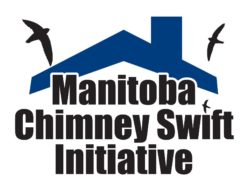
As we head into the winter season in the northern hemisphere, the Chimney Swifts are miles away enjoying the Amazonian heat! A short tour around the Chimney Swift wintering range show temperatures of 31oC in Bogota, Columbia; 12oC in Quito, Ecuador; 21oC in Lima, Peru and 24oC in Manaus, Brazil!
But before we start pining for the warm temperatures that our “snow birds” are experiencing – the monitoring summaries for 2021 are now up on the Manitoba Chimney Swift Initiative webpage!
This year both the National Roost Monitoring Program (NRMP) and Manitoba Chimney Swift Initiative (MCSI) monitoring nights were held. Prior to 2020, all sites in Manitoba were monitored under NRMP only, and that data was then submitted to the Canadian Wildlife Service (in addition to be using in-house at MCSI). However, the “official” NRMP protocol only used the information on roost sites with more than three swifts.
The prevailing thought about Chimney Swift spring migration is that they return to large roost sites first before heading out to their nesting chimneys. From our monitoring over the years, we think that in Manitoba some swifts go to the big roost sites and then head to the nesting chimneys – but other swifts just head straight to the nesting chimneys. This may be because we are on the northern edge of the Chimney Swift breeding range, and so the breeding season is so short that Manitoba swifts need to hop right to it to be able to raise young in such a short time period!
As most of our sites historically have three or fewer birds, we decided to switch things up this year. The big roost sites (>3 birds) still ran the usual NRMP monitoring schedule, but our smaller roost sites/ nest sites were monitored once a week for a period of around 30 days. This longer monitoring window allowed us to see 1) if swifts were using a site and 2) if swifts looked like they were setting up for a nesting attempt. This was our first year running the dual monitoring programs and we think it went quite well!

We also had volunteers who continued monitoring throughout the nesting period. From their work we were able to determine nesting success at sites in St Adolphe, Selkirk, Winnipeg, Dauphin, La Broquerie, and Lockport! The most exciting success was the fledging of young at the Tower 4 (the stack replacement tower) at the Selkirk Mental Health Centre! So great to have this result in the first year of the tower’s operation!
This year we monitored at 170 sites in 23 communities. Some of these sites had no Chimney Swifts, some sites had Chimney Swifts using chimneys, while others still had Chimney Swifts around but more searching is required to find where in the neighbourhood they are nesting/ roosting. All of this is thanks to you, our volunteers – all 80+ of you!

As always, the MCSI Roost and Nest Site database is available on the “Monitoring Results” page of the website. This document summarizes the high counts of Chimneys Swifts at sites, if a site was used for nesting or roosting, and successes/ failures of nest (if known).
The MCSI Monitoring Nights and NRMP results are also available on the “Monitoring Results” page of the website. This table gives a snap-shot into Chimney Swift numbers at each site over an approximately 30-day period.
- Amanda

It’s very exciting for me to realize that I watched my first chimney in Dauphin almost 22 years ago and now we have that roost and located 3 nest chimneys. I’ve monitored by myself plus with my wife and over the last few years there’s been 2 other ladies join us chimney side. Our monitoring efforts have increased but unfortunately the bird counts continue to drop but, across the world, people are now more aware of climate change, fossil fuels, pollution and indicator species. I hope there is time left for us to observe an increase in swift numbers to indicate we have come beyond the brink and to a better place.